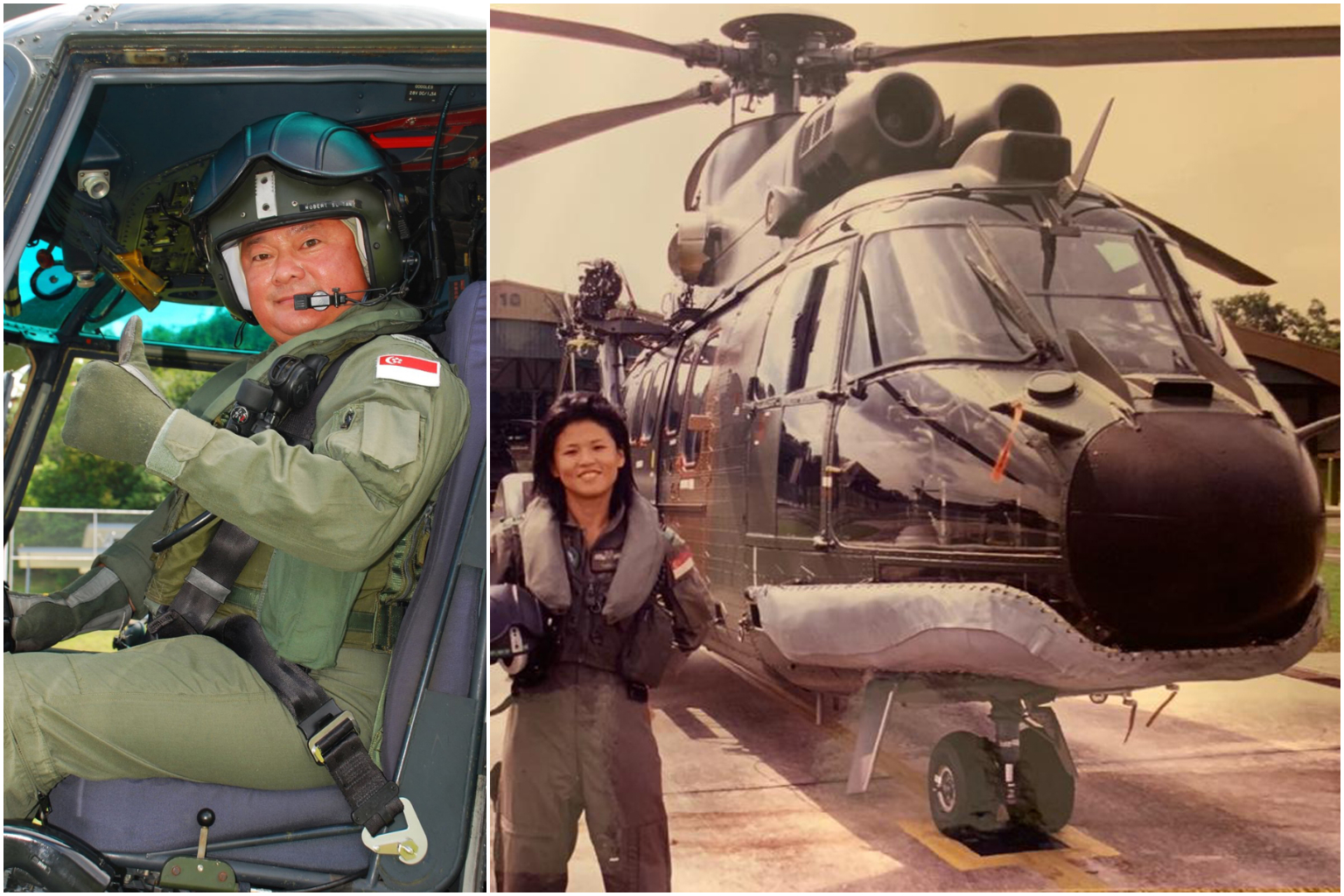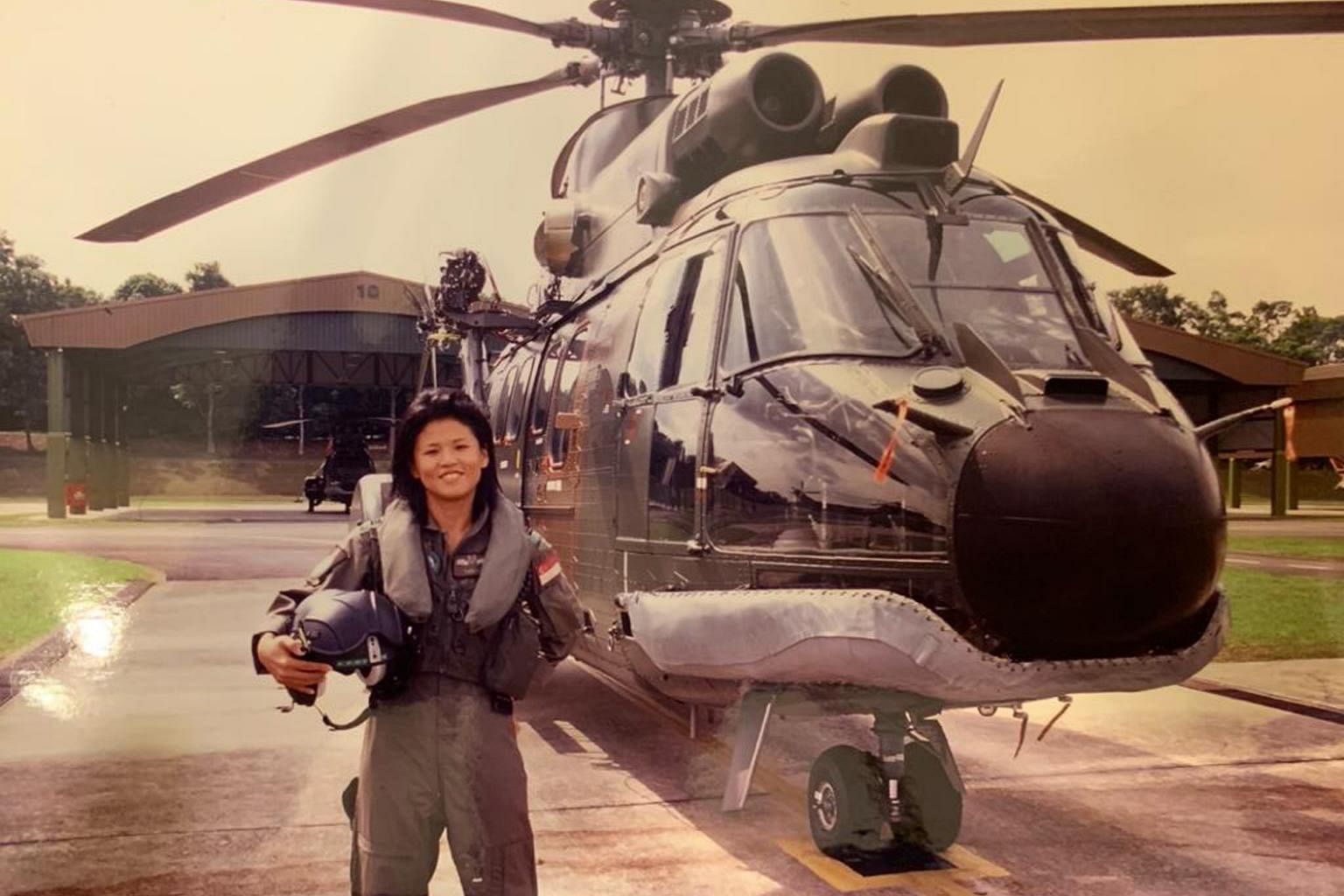Pilots reminisce as RSAF retires Super Puma progressively
Sign up now: Get ST's newsletters delivered to your inbox

Mr Robert Tan on the Super Puma in 2015 and Sembawang GRC MP Poh Li San, a former RSAF helicopter pilot, with a Super Puma circa 2005.
PHOTOS: COURTESY OF POH LI SAN, COURTESY OF ROBERT TAN
Follow topic:
SINGAPORE - In his 34-year career with the Republic of Singapore Air Force (RSAF), Mr Robert Tan has flown multiple aircraft, but the one that holds the fondest memories is the Super Puma helicopter, which is now being retired.
Still, he greets its impending retirement with optimism, seeing it as an upgrade and a renewal of the fleet.
The Super Puma will be progressively replaced by the newer H225M medium lift helicopter from Airbus, the first of which recently arrived in Singapore.
Mr Tan, 57, who clocked more than 3,600 hours of flight time on the Super Puma, said: "We have to upgrade our systems to maintain our edge and enhance our capabilities. If you have reached the potential of the current platform, sticking with them means you're stagnant."
He left the RSAF in 2015 and is now an instructor at the Singapore Aeromedical Centre.
The most memorable moments of his career with the Super Puma were the rescue and medical evacuation operations he took part in at night, in which lives were saved and are a real test of a pilot's skills, he said.
Known as a workhorse, the Super Puma has been flown on a range of missions in more than three decades of service in the RSAF, including search-and-rescue missions, humanitarian aid and disaster relief, and foreign exercises.
Over the years, other capabilities were added. They could be operated from landing ship tanks - the largest vessels in the Singapore navy - so they could be used in even more remote areas, and they could be used to transport Special Operations Task Force troopers for insertion, for instance, to board a hijacked merchant vessel.
The improved H225M helicopter has a range longer by about 20 per cent. The new tactical transport helicopter can also operate in confined environments, often the case in medical evacuations. The newer design allows for a simpler maintenance regime, with less manpower support needed.
Ms Poh Li San, 45, the RSAF's second female helicopter pilot who flew the Super Puma for about 10 years, told The Straits Times that safety has improved tremendously over the years since it was commissioned in 1985.
Ms Poh, who is now an MP for Sembawang GRC, said the Super Puma replaced the previous workhorse, the UH-1H Huey lightweight utility helicopter.
"The UH from the Vietnam War era was very much more basic, with more limited lift capabilities. The Super Puma that came later in the 1980s was a lot more high performance and multi-role capable," she said.

She counts being deployed for humanitarian aid and disaster relief in the aftermath of the 2004 Boxing Day tsunami as one of the highlights of her air force career.
Among other operations, the Super Puma was also used to fly the state flag at the National Day Parade, although this duty has since 2001 been passed to the CH-47 Chinooks.
The Super Pumas were also deployed for numerous search-and-rescue missions, including when the United States warship USS John S. McCain collided with a commercial oil tanker in 2017 in Singapore waters.
In 1997, two Super Pumas were deployed to Palembang, Indonesia, to help with the search for the missing SilkAir Flight MI185. They also helped with salvage operations of the plane in the Musi River.
Ms Poh added: "It's quite amazing how we were able to stretch the life of the Super Puma until now. The aircraft might still even be able to go on, just that it might be less cost effective and has a shorter range than the H225M."

